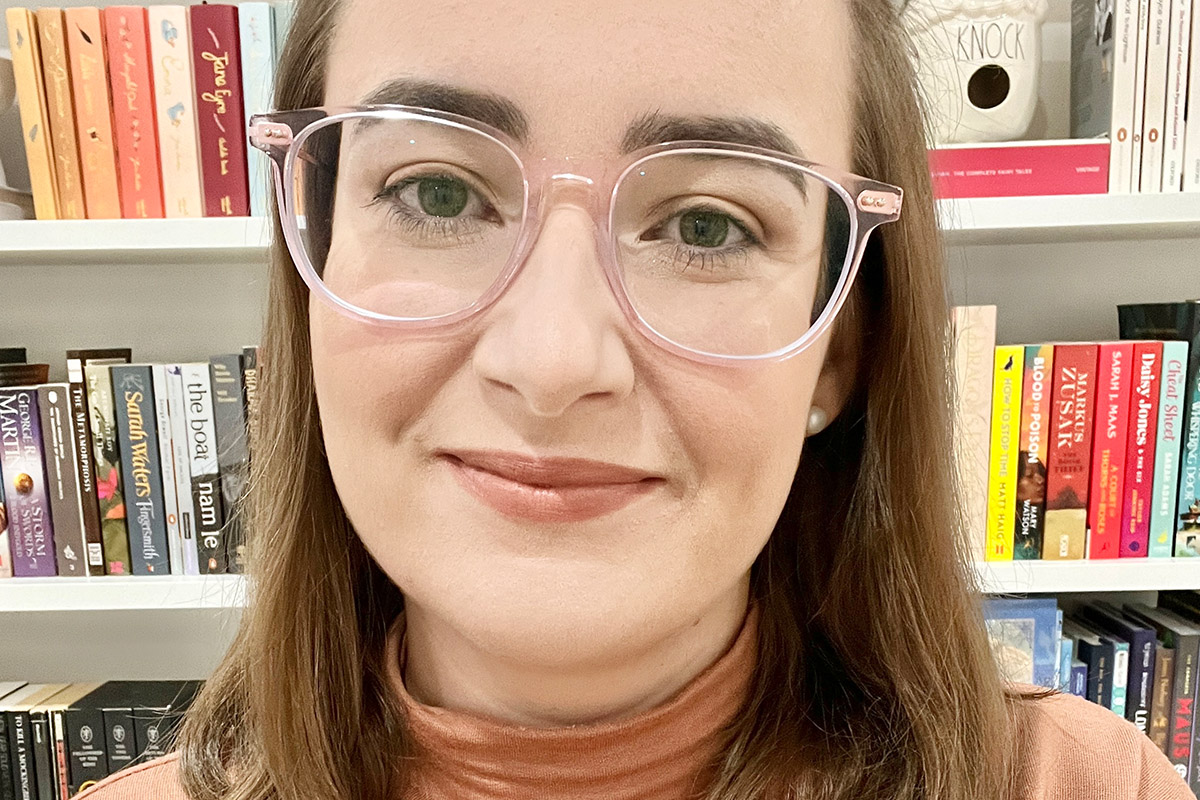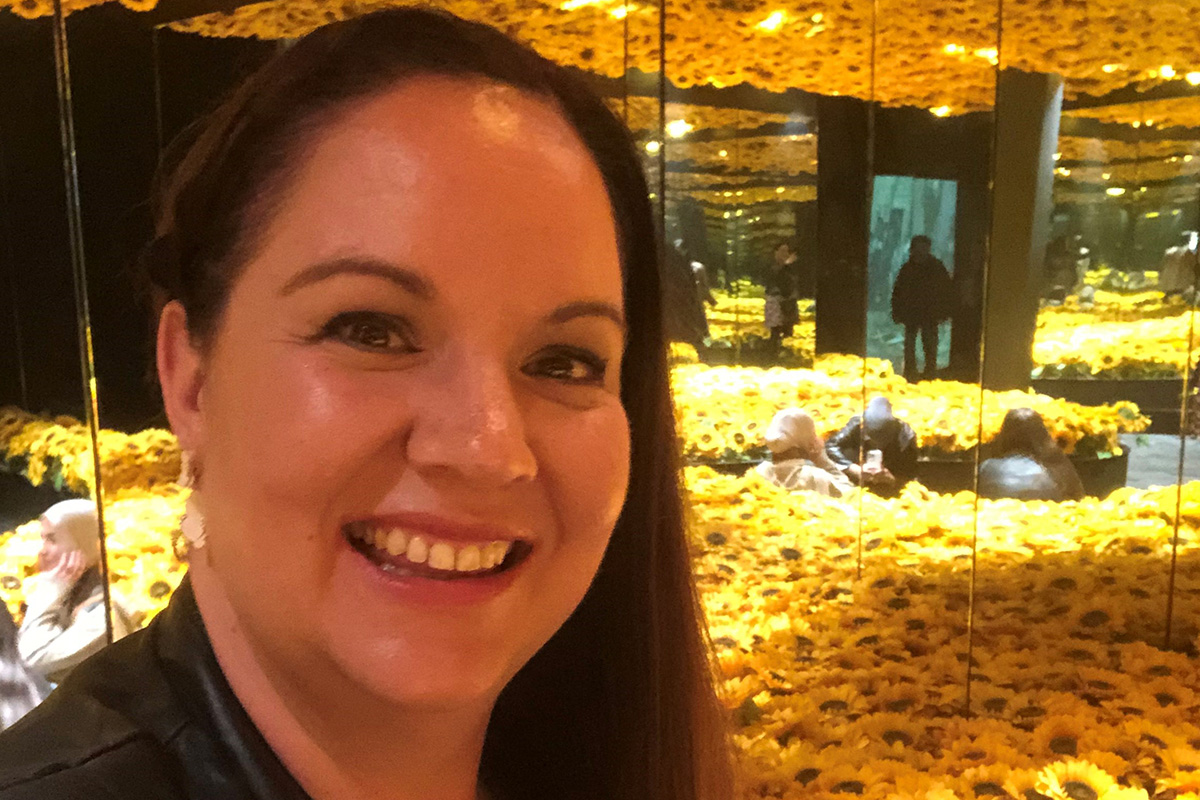
The 'pram hood' in use at Western Health intensive care ICU
Samantha Bates is an intensive care research nurse at Western Health who was closely involved with the development of a hood to prevent the spread of COVID-19 in healthcare settings. She will be speaking at the ANMF Health and Environmental Sustainability Conference on 6 May about ‘overcoming obstacles with your projects’.
ANMF was involved in occupational health and safety and sustainability discussions during the development of the hood, and advocated for the hood to be discussed in COVID-19 taskforce meetings.
Can you tell us what a COVID hood is and how you’ve been involved with that project?
It’s now widely understood that the SARS-CoV-2 virus is spread primarily via aerosol droplets, through coughing and sneezing for instance. In healthcare settings, there is great concern about transmission of virus via these patient behaviors, but also via aerosol generating procedures such as intubation/extubation, nebulizer therapy, high flow oxygen and particularly non-invasive ventilation support such as CPAP or BiPAP (machines that support a patient’s breathing).
Around February/March 2020, there was great concern about how we were going to protect healthcare workers. Associate Professor Forbes McGain is an intensivist/anaesthetist and colleague at Western Health who was so concerned for the welfare of healthcare workers that he conceptualised the idea of a personalised ventilation hood. This hood device would have a large, clear plastic cover, similar to an infant pram cover, that would directly stop large droplets.
Forbes also wanted to add a negative pressure fan that could draw air up inside the cover, directing air away from both the patient and healthcare worker. This air would then be filtered out via a large high efficiency particulate air filter that captures 99.95% of particles larger than 0.3 microns. Effectively the device would be a mobile personalised ventilation hood device. Forbes consulted with Professor Jason Monty and his team from the Department of Mechanical Engineering at The University of Melbourne to refine his idea into a working prototype device that could be used in hospital settings.
That’s where I come into the story. Forbes and I both knew pretty early on that this working prototype needed to undergo rigorous clinical trial testing very, very rapidly. So I was consulted in helping to develop the early working prototype models, utilising my nursing skills to think about its usability and application in a clinical bedside setting, as well as my research knowledge to rapidly draft up a research protocol and submission for a clinical trial that required review by a human research ethics committee. We initially trialed this device in the intensive care units at Footscray and Sunshine Hospitals for use on patients with confirmed or suspected COVID-19, but it can also be used for patients with other infectious respiratory diseases such as influenza, tuberculosis and measles.
What were the obstacles you encountered with the project?
The aim was to make this device as re-usable as possible to protect not only the environment from single-use plastic waste, but also to protect potentially scarce resources. We also wanted to make a product that could be made easily and cheaply for lower income countries. The PVC for instance, was sourced from manufacturing companies in Japan and at one stage there was a real possibility of lack of supply. So, the biggest hurdle was in establishing a cleaning process so the device could be cleaned and disinfected effectively between patient use and be re-used as much as possible.
With COVID-19, there is no room for error. So, we kept going until we got it right, starting with a rigorous manual cleaning process that was at first quite arduous, especially having to don full PPE to do so. We’ve now refined the process so that we have a lighter grade re-usable PVC product that can be washed on site at the hospital in an industrial washing machine with detergent, killing not only SARS-CoV-2 virus, but also other bacteria and viruses.
Time was the other big obstacle – the ethical review process was exhausting because we had to pull this together in a really short space of time, and I spent many late nights drafting up all the regulatory documents required. I would honestly say that the support we got for this project was absolutely phenomenal, from many people across a variety of settings. We’re just very, very grateful.
Based on your experience of the COVID hood project (and other successful projects), what would you say are the elements of a successful change project?
Perseverance is key. Don’t let others deter you from you what you want to achieve. The initial conversations I had with our infection prevention and control nurses could have been quite disheartening – they told me that in their realm of practice, they don’t advocate for anything in healthcare being re-used. But we kept the conversation open about the bigger picture, lack of resources, and the absolute need to try to protect our healthcare workers with a new and innovative approach. They were actually incredibly supportive and helped script and oversee a training video I filmed for the manual cleaning process, and helped establish best practice evidence for the temperature setting and process of washing the re-usable covers.
The other key factor is networking – seek out and talk to as many people as you can. It’s amazing how much that network process can grow; the connections you can establish and the knowledge that you can gain. That’s how I ended up establishing we have industrial washers in the basement of our hospitals and that some amazing people were able to do this for us.
Finally, keep the enthusiasm. It can be a hard and challenging journey at times, but all that hard work can be personally, very rewarding. Others may not necessarily appreciate or understand the huge amounts of work that you’ve done along the way but keep the passion for the project in your heart and don’t let the light die out.
One of the obstacles for people in trying to make healthcare more environmentally sustainable is getting buy-in from decision-makers. Was that an issue you encountered?
I think in our case the global pandemic helped put perspective on the need of our project. It was an exciting and interesting innovation that was a world-first, which garnered initial interest. And healthcare workers were scared – the threat of contracting COVID-19 in the workplace was very real. It’s difficult to be the first person to start a new change and create leadership, but even harder for the second person to support it. However, it’s the second and successive people who are the key to establishing that change. Establish a team of like-minded individuals to help your quest. Educate people with smart, short, succinct information. We’ve become a society that is time-poor, so to get buy-in you need to work smarter on communication methods. Whatever change you also want to achieve has got to be relatively easy and you need to convince others that it can be easy (or at least no harder than the current approach). In healthcare, we look for the easy option all the time. Getting people to take ownership of a project is key to success also. If they have a stake in how they contribute, this can be incredibly powerful.
Have you previously been involved with sustainability projects? What were the similarities with the COVID hood project?
I have been involved in other sustainability projects. I’ve been on my hands and knees, with gloves and mask on, sifting through bags of medical waste and rubbish, estimating and weighing potentially recyclable material that were thrown in the general waste. It was grubby work and pretty enlightening. You’d be amazed at what got thrown out. We did this as a project to audit our recyclable waste program and identify room for improvement. It was somehow vastly different to the scale of this project, but there were similar principles. Communication and engagement are key.
Hear Samantha Bates and other ANMF members discuss their sustainable health projects and accrue seven hours of CPD at the ANMF Health and Environmental Sustainability Conference on 6 May.




